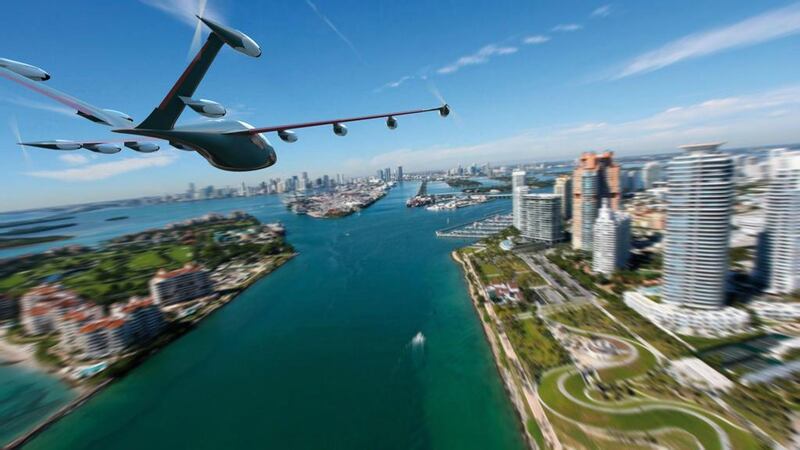In 2010, an advanced aircraft engineer at Nasa’s Langley Research Center named Mark Moore published a white paper outlining the feasibility of electric aircraft that could take off and land like helicopters but were smaller and quieter. The vehicles would be capable of providing a speedy alternative to the dreary morning commute.
Mr Moore’s research into so-called VTOL;short for vertical takeoff and landing, or more colloquially, flying cars;inspired at least one billionaire technologist. After reading the white paper, the Google co-founder Larry Page secretly started and financed two Silicon Valley start-ups, Zee Aero and Kitty Hawk, to develop the technology.
Now Mr Moore is leaving the confines of Nasa, where he has spent the past 30 years, to join one of Google’s rivals: Uber Technologies. He is taking on a new role as director of engineering for aviation at the ride-hailing company, working on a flying car initiative known as Uber Elevate. “I can’t think of another company in a stronger position to be the leader for this new ecosystem and make the urban electric VTOL market real,” he says.
Uber is not constructing a flying car yet. In its own white paper published last October, the company laid out a radical vision for airborne commutes and identified technical challenges it said it wanted to help the nascent industry solve, such as noise pollution, vehicle efficiency and limited battery life. Mr Moore consulted on the paper and was impressed by the company’s vision and potential impact.
He acknowledges that many obstacles stand in the way, and they are not only technical. He says each flying car company would need to independently negotiate with suppliers to get prices down, and lobby regulators to certify aircraft and relax air-traffic restrictions. But he says Uber, with its 55 million active riders, can uniquely demonstrate that there could be a huge, profitable and safe market. “If you don’t have a business case that makes economic sense, than all of this is just a wild tech game and not really a wise investment,” Mr Moore says.
Uber’s vision is a seductive one, particularly for sci-fi fans. The company envisions people taking conventional Ubers from their homes to nearby “vertiports” that dot residential neighbourhoods. Then they would zoom up into the air and across town to the vertiport closest to their offices. “We don’t need stinking bridges,” says Mr Moore.
These air taxis will only need ranges of between 75km and 130km, and Mr Moore thinks that they can be at least partially recharged while passengers are boarding or exiting the aircraft. He also predicts we will see several well-engineered flying cars in the next one to three years and that there will be human pilots, at least managing the onboard computers, for the foreseeable future.
Uber is not the only firm involved in the development of airborne commuting; Airbus said last month it plans to test a prototype of a flying car by the end of this year, while US-based Joby Aviation has a two-seat fixed-wing vehicle, the S2, under development.
Mr Moore’s move to Uber is a risky one. He says he is leaving Nasa one year before he is eligible for retirement and walking away from a significant percentage of his pension and free health-care for life “to be in the right place at the right time to make this market real”. Although it is probably safe to say that Uber, with some US$11 billion on its balance sheet, is making it worth his while. Mr Moore seems to be disillusioned with Nasa, saying the agency is leaving promising new aviation markets to the private industry. “It’s the federal government who is best positioned to overcome extremely high levels of risks,” he says.
While Nasa is larded with layers of bureaucracy and management, the Uber chief executive Travis Kalanick has been closely involved in hatching his company’s flying car plans, Mr Moore says. That is, when he is not distracted with his own political crises, such as his role on the US president Donald Trump’s advisory council, which he relinquished last week after criticism from customers, drivers and employees.
Mr Kalanick’s bet on Uber Elevate is another indication that while Silicon Valley seems on the surface to be consumed with politics and protests these days, the march into the future continues apace.
* Agencies
Follow The National's Business section on Twitter





